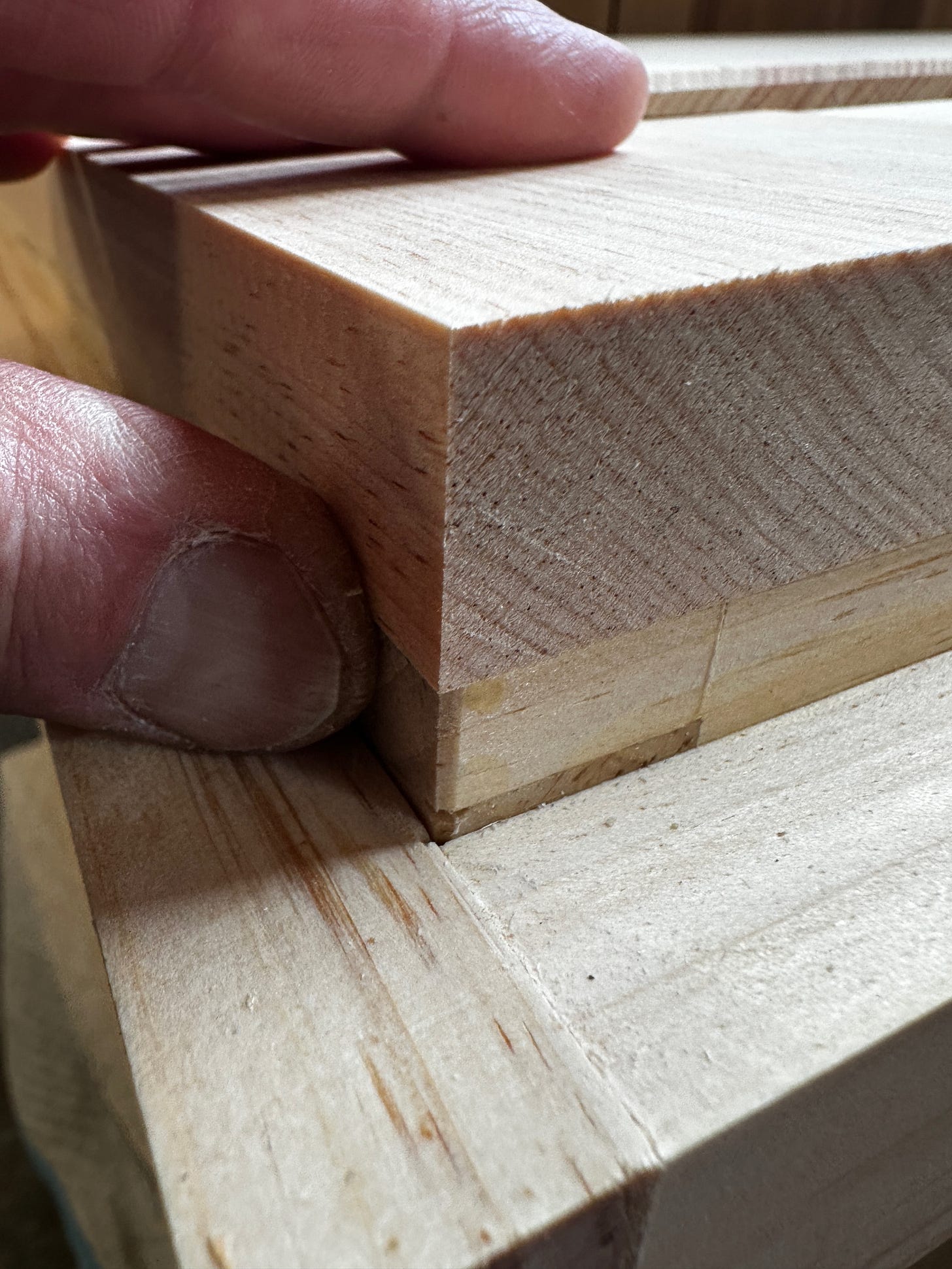For the last six days I’ve been building a new version of the Anarchist’s Tool Chest for a revised edition of the book. I have only 16 more days to finish this chest – inside and out – so that my friend Narayan has time to take photographs for the revised book (Narayan took the beauty shots for the first edition).
Building the tool chest at this pace is intense and detailed work. And as I cut the dovetails for the dust seal that wraps around the frame-and-panel lid today, I said something strange out loud. Almost involuntary.
“Why am I doing all this?”
I’ve built this tool chest about 40 times since 2010 during classes and for customers. I almost don’t need a cutting list anymore. I’ve been working out of this chest for just as long, so I know both its blossoms and its dead branches.
What’s important here is this: My chest sits next to the red tool chest I built for “The Anarchist’s Design Book.” That chest – based off Jonathan Fisher’s tool chest – is built with rabbets and roseheads instead of dovetails and dovetails. And with my hand on my heart I can say that the two chests are equal in the way they function.
They fit the same tools. The chests’ trays move the same. They have a lid that keeps out the dust and the salts.
So why am I cutting all these damn dovetails? Plus the dovetails on the skirts that wrap around the carcase? And the dovetails around the lid? And I haven’t even started on the dovetailed trays that go inside the chest. I have at least four more eight-hour days ahead of me before I get to whip out a paintbrush to finish the job. Why am I going to all this trouble?
For me, bringing beauty into the world reduces my anger with it.
I’ve tried to think of a more clever way to say it, but I’m at a loss. This complicated tool chest is beautiful. You can drop it off a truck (I have, on two occasions) and it will literally bounce off the concrete. You can leave it out in the rain (I have, on two occasions) and the rain will literally run down the bevels on the lid and skirts and leave your tools untouched.
You can move the trays 50 times a day for 15 years and they will still move. They might not slide as smoothly, but they still move.
And you can dance on top of the lid. Honestly dance.
The whole damn thing is a time capsule for your tools, carrying them forward in time. Past you. Past your kids and grandkids. That utility and durability is welcome. But I’ll be dead when its dovetails are revered. The chest’s utility is not what gives me sticky pants.
It’s the way it looks. The chest is a beautiful form. You can walk off its design with dividers and write a book on all that, but I know the heart of it. The ends of the chest are squares. Squares are attractive (Elaine Sanders in the 8th grade didn’t believe me, but it’s true). Squares.
The elevation of the chest is a ratio of about 2:3. That is the sexiest ratio. (Well, 3:5 is also a vixen, but 2:3 has claws that dig into your back.)
Like a gorgeous Roman building, the chest has a plinth (the lower skirt), the primary part of the building (the carcase) and an entablature or whatever (the upper skirt and dust seal). These are all proportional in the Greek and Roman way to someone standing in front of the chest as if it were a building.
Or a temple.
Keep reading with a 7-day free trial
Subscribe to The American Peasant to keep reading this post and get 7 days of free access to the full post archives.






